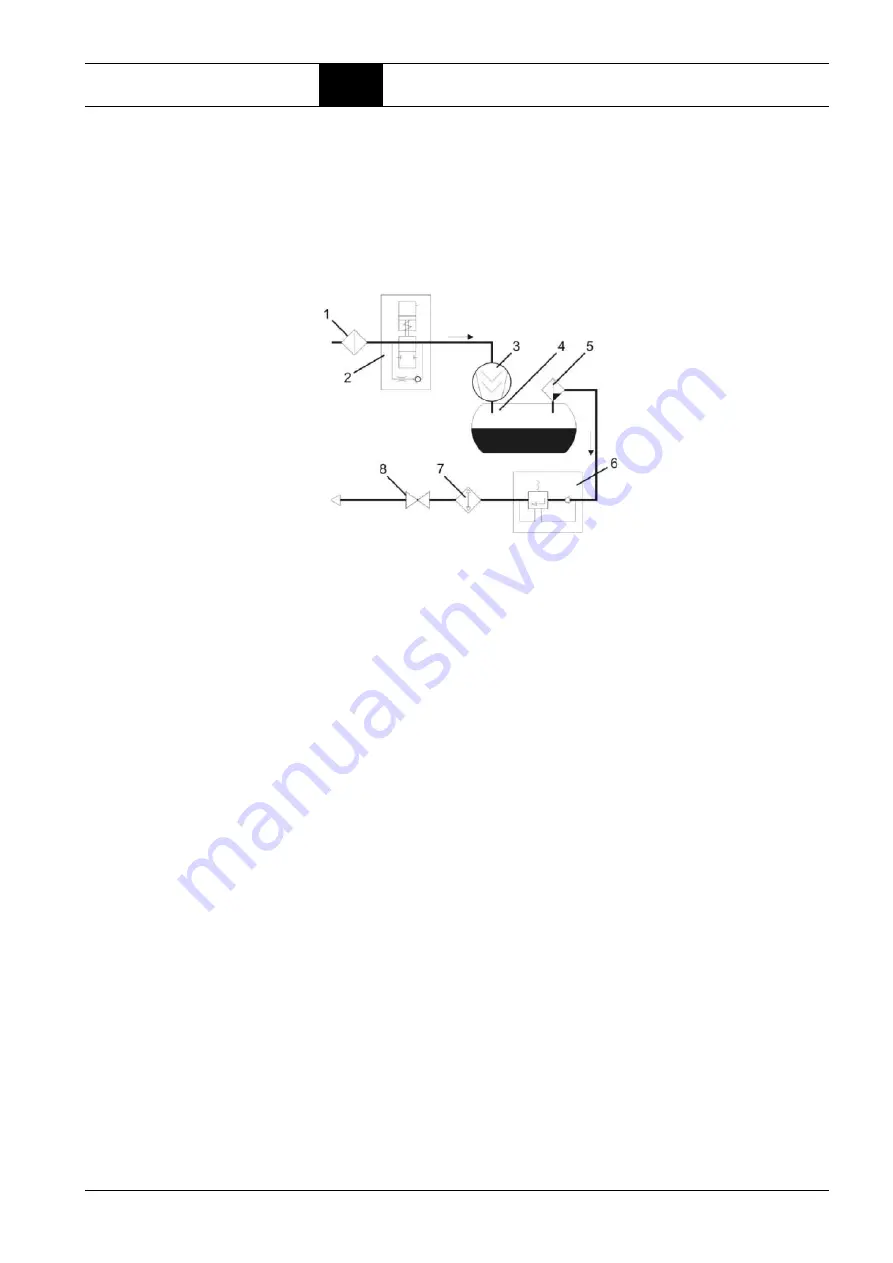
Operating instructions for S 40-3...S 150-3 series screw compressors
Page 21
Product description
2.2
Operating principle of compressor
Both screws have screw-shaped profiles, intermeshing without contact.
Together with the housing wall, these rotors form chambers which gradually
reduce in size along the direction of air flow. Rotation of the rotors causes the
air taken in to be compressed to the final pressure in the chambers.
During compression oil is continuously injected into the air end. This has a
cooling, sealing and lubricating function.
Air circuit
Fig. 2.1: Components of the air circuit
1 Intake filter
The intake filter cleans the air suctioned by the air end.
2 Intake regulator
The intake regulator opens (load operation) or closes (idling operation or
standstill) the suction line depending on the operating condition of the
compressor.
3 Air end
The air end compresses the air which is sucked in.
4 Compressed air-oil separator vessel
The compressed air separates from the oil under the force of gravity in the
compressed air/oil vessel.
5 Oil separator
The oil separator separates the residual oil contained in the compressed
air.
6 Minimum pressure non-return valve
The minimum pressure non-return valve does not open until the system
pressure has increased to 51 psig. This causes a rapid build-up of the
system pressure and ensures lubrication in the starting phase. Once the
compressor has been switched off, the check valve prevents the com-
pressed air from flowing back out of the mains line.
7 Compressed air aftercooler (air cooled or water cooled)
The compressed air is cooled in the compressed air aftercooler, causing
the water contained in the air to condensate.
8 Stop valve
The screw compressor can be isolated from the mains using the stop
valve.
















































